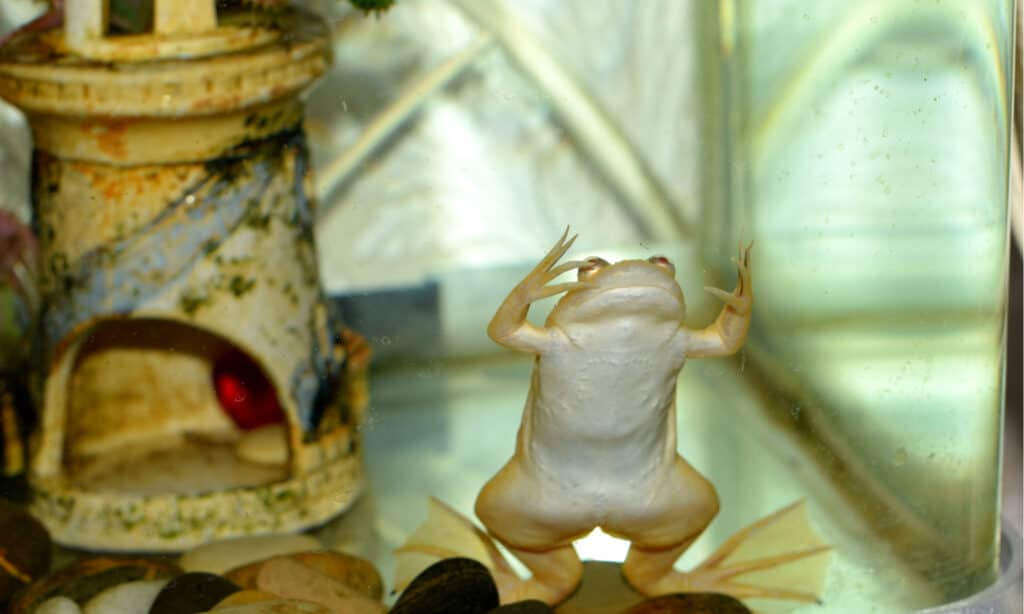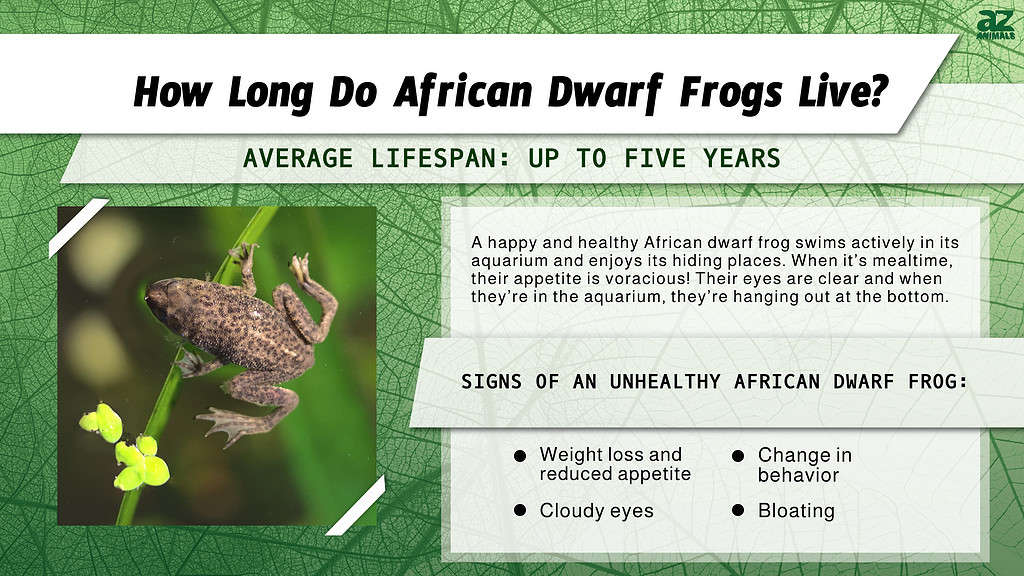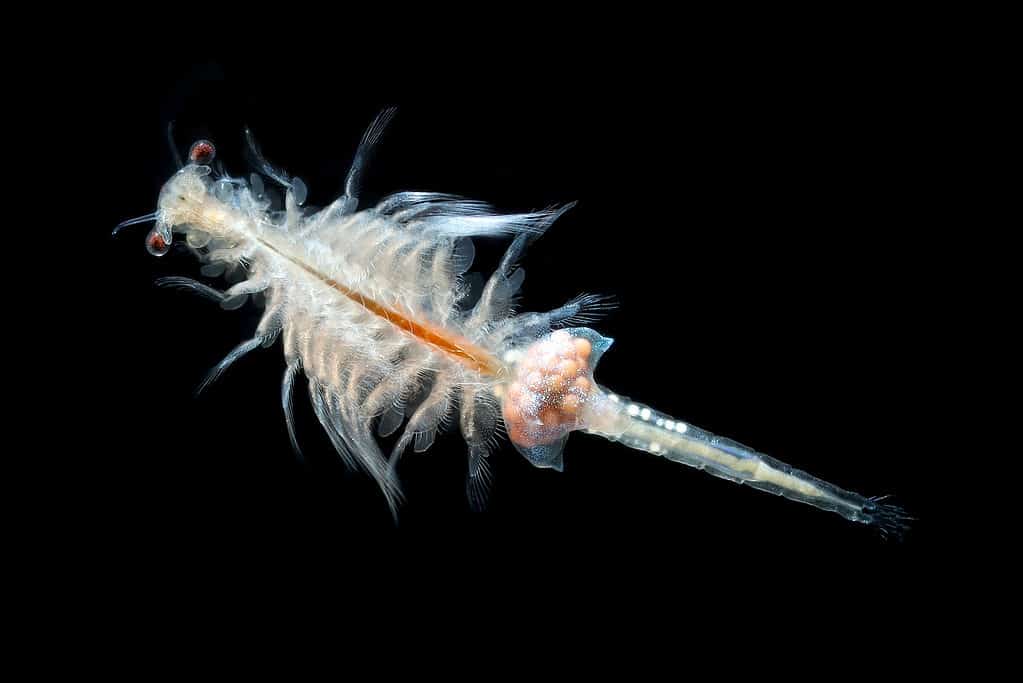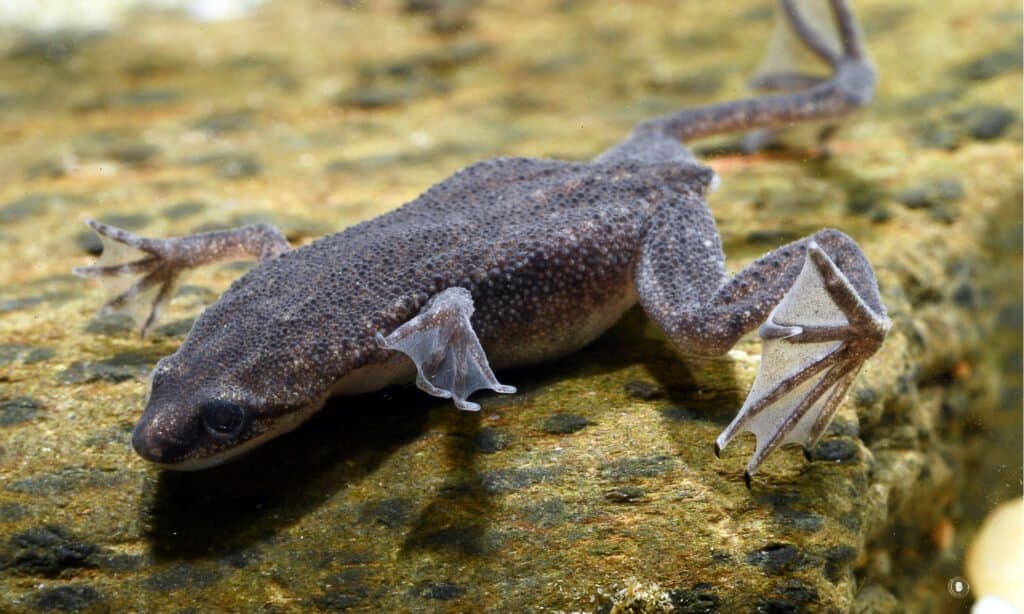This aquatic species thrives in a safe environment and they’re open to tankmates. Learn about the African dwarf frog’s lifespan as well as how to care for one (or more) if you decide to keep one as a pet!
What Is an African Dwarf Frog?
African dwarf frogs are amphibians that spend their lives in the water. When they’re still tadpoles, they have gills that allow them to breathe underwater and as they grow into adults, they develop lungs and can breathe air. By the point they’re fully matured, they have lost their gills. Despite having lungs and breathing air, they cannot survive out of the water for long. Even a short 15-minute stint above water could prove deadly for an African dwarf frog.
These frogs need an enclosed aquarium to keep them from hopping out and enduring a rapid onset but slow death due to dehydration. Though they need a fully enclosed aquarium to prevent accidents, they also need enough space between the surface of the water and the lid of the tank, so they have plenty of space to swim up and breathe.

African dwarf frogs need an aquarium with a lid you can secure.
©tanzelya888/Shutterstock.com
Males are a bit smaller than their female counterparts and when they reach the adult stage, they have small glands just behind their front legs. You can also tell them apart from females by the sounds they make — they buzz rather loudly when they’re looking for a mate or simply when they’re displaying excitement. Females are usually larger than the males and have a differently shaped body. It’s more pear-like and their tails grow longer than a male’s tail. They don’t buzz like the males either.
African Dwarf Frogs as Pets
African dwarf frogs make wonderful pets and can also have tankmates such as community fish with docile temperaments. These frogs spend most of their time hanging out in the bottom of the tank, but they do swim up toward the top of the aquarium to breathe.
African Dwarf Frog Lifespan: How Long Do African Dwarf Frogs Live?
The African dwarf frog lives up to five years so long as you care for it properly. These are omnivores that need a decent-sized habitat of at least 10 gallons. Their habitat should also include hiding places and should be properly secured at the top to keep your African dwarf frog safe.

How to Best Care for Your African Dwarf Frog
Food
Your African dwarf frog needs a well-balanced diet to thrive. There are fish food pellets you can purchase that are made specifically for African dwarf frogs. Ultimately, they need to sink and be for freshwater. Aside from fish food pellets, you can also provide brine shrimp, blackworms, and tubifex worms. Thawed frozen bloodworms allow you to target-feed. You only need to feed your pet once each day. First, thaw any frozen food and let them feast for one to two minutes. After that period, remove any of the bits they do not consume.

Brine shrimp make up part of an African dwarf frog’s balanced diet.
©Dan Olsen/Shutterstock.com
Habitat
The habitat for your African dwarf frog should be large and comfortable for your pet. 10 gallons is the absolute minimum. Be sure that you can secure the lid and get creative when setting it up. Hiding places like caves and logs are ideal. When selecting the substrate to place at the bottom, ensure it is large enough. You don’t want your African dwarf frog mistaking it for food and chowing down on it!
Along with caves and logs, add some plants close to the surface of the water. This is where your African dwarf frog can settle while breathing at the surface. Ensuring water quality is a more complex process and if you’re unsure, head to your local pet store for a free test. Ultimately, the temperature of the water should remain between 72-82°F and the parameters for nitrate, nitrite, ammonia, and pH should all be appropriate to support your pet.
Health
Part of keeping your African dwarf frog healthy is keeping a clean habitat. Part of your daily responsibility as a pet owner is checking the water temperature and filter. Additionally, removing any food your frog doesn’t consume after the feeding period is necessary. Every week, you should be testing the water quality. Every month, you should replace any filter parts and change the total volume of the water by 10-25%.

African dwarf frogs thrive in a comfortable habitat with plenty of food and interactions with tankmates.
©Guillermo Guerao Serra/Shutterstock.com
A happy and healthy African dwarf frog swims actively in its aquarium and enjoys its hiding places. When it’s mealtime, their appetite is voracious! Their eyes are clear and when they’re in the aquarium, they’re hanging out at the bottom (unless they’re breathing, of course). However, you should also be aware of some symptoms that require your attention right away. They include:
- Weight loss and reduced appetite
- Cloudy eyes
- Bloating
- Change in behavior
House your African dwarf frog with others of the same species or docile community fish. With careful and intentional maintenance, you can have a thriving aquarium!
The photo featured at the top of this post is © Charlie Tyack/Shutterstock.com
Thank you for reading! Have some feedback for us? Contact the AZ Animals editorial team.







